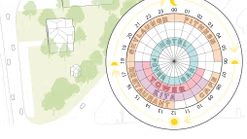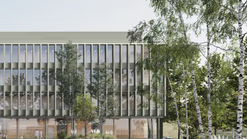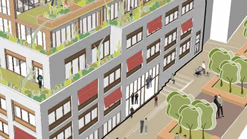Research
With our comprehensive expertise in the area of nature-based solutions, we are committed to promoting sustainable practices in the global discussion of landscape architecture and measures for resilient cities.
01
Nature-based solutions in the public realm
ur work on a wide range of projects in different countries has enabled us to draw some important conclusions. These guide our research into nature-based solutions in public spaces and in the area of park design.
As part of her investigation of the subject of “Nature-based Solutions in Public Realm Design: from Athens to the Nordics, from Singapore to the Pacific Northwest,” the Managing Director of ensphere, Dimitra Theochari, researched such areas as the integration of nature into the urban realm. Her work underlined the importance and advantages of ecological sustainability for the ecosystem.


02
International knowledge transfer on the subject of climate change
The effects of climate change, which include heat, flooding, extreme weather events, or rising sea levels, are impacting upon different European cities in different ways. ensphere engages actively in international knowledge transfer with the aim of developing strategies for mastering these challenges.
We are convinced that nature-based solutions have the transformational potential to create resilient public spaces at a time of climate change and urban growth. As part of the international discussion of nature-based solutions, we strive to incorporate nature in such a way that we can design urban projects that offer long-term ecological and economic benefits.
03
Strategies for improving urban green spaces
We exchange ideas with international colleagues as we work to preserve the urban green spaces that enhance the quality of life and well-being of city dwellers.
The protection and retention of trees is a special priority in this context. This is why we are participating in research into guidelines that will strengthen measures to preserve trees at a local level.


04
Solutions for dealing with climate change
Climate change is leading to longer and more frequent heatwaves. These are having an alarming effect on ecosystems and human health.
As part of the integrated network of ATP architects engineers, we are developing strategies as part of the ATP Green Deal with the aim of readdressing the design of open spaces in projects and promoting a better microclimate. And we are also researching measures for supporting the energy-efficient design of the built environment.
05
Climate-resilient urban planning
Nature-based solutions play an important role in the design of the public realm at a time that is characterized by climate change and the growth of cities. These solutions are closely linked to the implementation of concepts for rainwater management and blue-green infrastructure in the context of climate-resilient urban planning.
Our focus lies on the development of multi-benefit solutions that are relevant for and applicable to urban projects in the DACH Region and across Central Europe. These emphasize ecology, environmental benefits, and ecosystem services. We pay special attention to water-sensitive urban planning and engineering biology.


06
Biodiversity
Animals, birds, and pollinators play a key role in the self-regulation and maintenance of the ecosystem. We develop strategies for the promotion of biodiversity.
These include the layering of vegetation and the linking of different layers of vegetation that are occupied by different species; the integration of water elements to ensure the survival of species during heatwaves; the protection of bushes and hedges as a habitat for small animals and birds; the role of root networks in communication between plants; the regulation of ecosystems; and the survival of plants during extreme weather events and heatwaves.